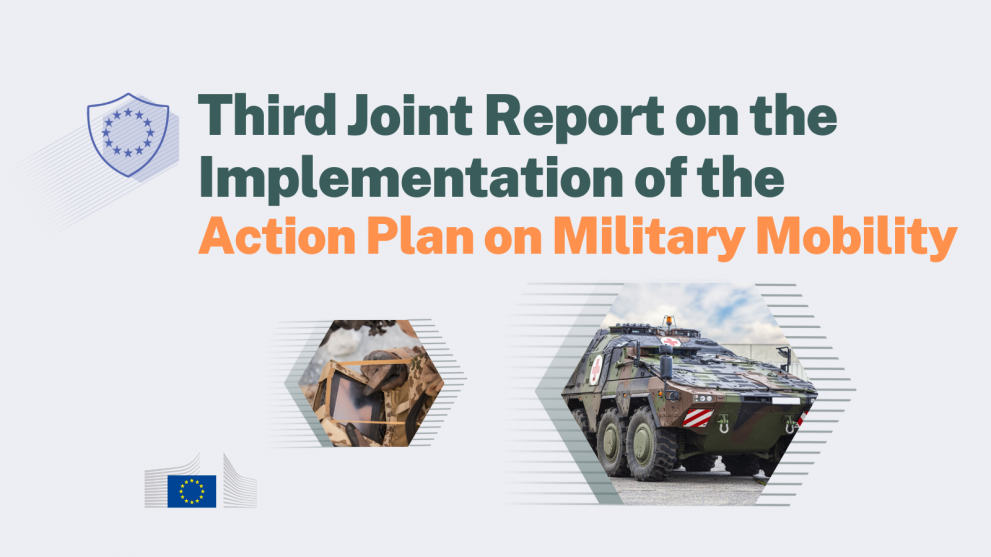
On 24 September, the European Commission and the EU High Representative of the Union for Foreign Affairs and Security Policy adopted the third Joint Report on the implementation of the Action Plan on Military Mobility.
The Joint Report outlines the very good progress achieved since October 2020 in the implementation of the Action Plan with concrete results. This month’s call for project proposals to co-fund dual-use infrastructure projects through the Connecting Europe Facility is a concrete example, with a budget of 330 million EUR, as well as the decision to include a topic on the development of a digital system for the secure and quick exchange of information related to military mobility in the 2021 annual work programme of the European Defence Fund as part of a call worth 50 million EUR. The report also reflects the progress concerning procedural and regulatory issues, for example, the completion of work on a guidance document on the use of the EU form 302 in the area of customs formalities in the EU that will facilitate the move or use for export, re-import or transit in the EU of military goods. Another example is the work within the European Defence Agency framework to improve military mobility by implementing two Cross-Border Movement Permission Technical Arrangements.
Commissioner for Internal Market Thierry Breton said: Collaborating in the field of defence is essential; it is at the core of our ambition towards common defence. The EU Action Plan on Military Mobility is part of this effort by enabling Member States to act faster and more effectively. This Joint report shows there has been very good progress since October 2020, showing concrete and tangible results.”
EU High Representative of the Union for Foreign Affairs and Security Policy Josep Borrell said: “Improving Military Mobility is critical to ensure that our armed forces can respond quickly to threats. The progress, both towards strengthening transport infrastructure and streamlining cross border checks, is a concrete example of how the EU works to protect our citizens. Military mobility also remains an important flagship area of EU-NATO cooperation.”
Commissioner for Transport Adina Vălean said: “The transport network needs to accommodate the requirements of all transport users, including the military needs. Making sure that European transport infrastructure is equipped for civilian and military dual-use is about collective security while spending public money responsibly.”
Launched in 2018, the Action Plan on Military Mobility aims to facilitate rapid and seamless military movements within and beyond the EU. The Action Plan contributes to the Common Security and Defence Policy by enabling EU Member States to act faster and more effectively, while fully respecting their national sovereignty and decision-making. The work is implemented in a coordinated manner at the EU level, between the EU institutions and bodies – the Commission services, the European External Actions Service, including the EU Military Staff, and the European Defence Agency, and in close consultation with the EU Member States. Military Mobility is supported through other defence initiatives, notably the Permanent Structured Cooperation (PESCO) and is a flagship project within the EU-NATO cooperation framework as well.
Details
- Publication date
- 27 September 2021
